
Pollokshields is an area in the Southside of Glasgow, Scotland. Its modern boundaries are largely man-made, being formed by the M77 motorway to the west and northwest with the open land of Pollok Country Park and the Dumbreck neighbourhood beyond, by the Inverclyde Line railway and other branches which separate its territory from the largely industrial areas of Kinning Park, Kingston and Port Eglinton, and by the Glasgow South Western Line running from the east to south, bordering Govanhill, Strathbungo, Crossmyloof and Shawlands residential areas. There is also a suburban railway running through the area.

Ceres is a village in Fife, Scotland, located in a small glen approximately 2 miles (3 km) over the Ceres Moor from Cupar and 7 mi (11 km) from St Andrews. The former parish of that name included the settlements of Baldinnie, Chance Inn, Craigrothie, Pitscottie and Tarvit Mill.

St Columba's Church is a Church of Scotland Parish church that used to serve a Gaelic congregation in Glasgow until its closure in 2021.

Wellington Church is a congregation and parish church of the Church of Scotland, serving part of the Hillhead area of Glasgow, Scotland. The building is located on University Avenue, Glasgow, opposite the University of Glasgow.

Edinburgh: The New Town Church of Scotland serves Edinburgh's New Town, in Scotland. It is a congregation of the Church of Scotland, formed on 1 February 2024 by the union of St Andrew's & St George's West and Greenside Church.
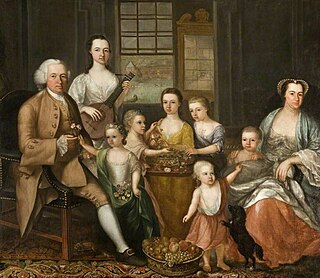
The Tobacco Lords were a group of Scottish merchants active during the Georgian era who made substantial sums of money via their participation in the triangular trade, primarily through dealing in slave-produced tobacco that was grown in the Thirteen Colonies. Concentrated in the port city of Glasgow, these merchants utilised their fortunes, which were also partly made via the direct ownership of slaves, to construct numerous townhouses, churches and other buildings in Scotland.
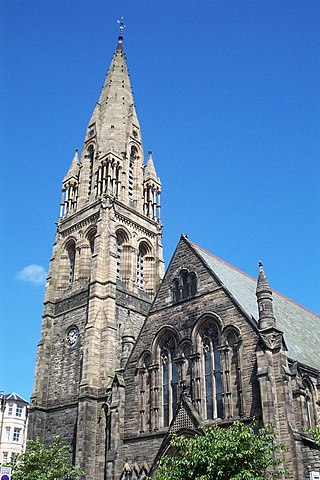
Mayfield Salisbury Church, formerly Mayfield North Church and also informally known as Mayfield Church, is a parish church of the Church of Scotland. It is located in the Newington district of Edinburgh, approximately 1.5 miles (2.4 km) south of the city centre. The building was designed by Hippolyte Blanc, with construction taking place between 1875 and 1879. Extensive renovations were carried out in 1969 following a major fire which destroyed most of the roof. The building is noted for the range and quality of its stained glass. The present congregation is the product of several mergers, most recently of Mayfield Church with Salisbury Church in 1993.

St. John's Renfield Church is a parish church of the Church of Scotland, serving Kelvindale in the west end of Glasgow, Scotland. It is within the Church of Scotland's Presbytery of Glasgow.
Ralph Robb was a Scottish clergyman, the first Free Church of Scotland minister in the New World.
Thomas Smeton, Smeaton or Smieton (1536–1583) was a Scottish minister and Principal of Glasgow University.

St Andrew's-by-the-Green is an 18th-century category-A-listed former church in Glasgow, Scotland. A Qualified Chapel, it was the first Episcopalian church built in the city. It is situated on the corner of Turnbull Street and Greendyke Street, overlooking Glasgow Green, on the edge of the city's East End.

Page\Park Architects was established in 1981 by David Page and Brian Park. It has developed one of Scotland's best known practices undertaking work over a range of sectors.

Provan Hall is a historic place composed of two buildings built about the 15th century and situated in Auchinlea Park, Easterhouse, Glasgow. It is owned by the National Trust for Scotland and managed by Glasgow City Council. The two parallel buildings, enclosing a courtyard, are protected as a category A listed building.
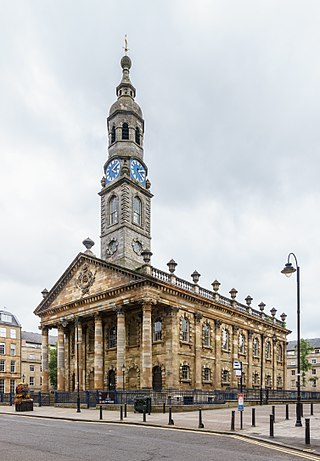
St Andrew's Square is a public square in the city of Glasgow, Scotland and lies to the south east corner of Glasgow Cross, close to Glasgow Green. The square is noted for its immense 18th-century classical church, St Andrew's in the Square, from which the square takes its name. The church was completed in 1758, to the designs of architect Allan Dreghorn and master mason Mungo Naismith and is among the finest of its type anywhere in Britain. The interior has lavish 18th century rococo plasterwork. The building is Category A listed. It is one of six squares in the city centre.

The church is named after Saint Mungo, patron saint and founder of the city of Glasgow. It belongs to the Church of Scotland Presbytery of Stirling and serves the parish of Alloa. A chapel dedicated to St Mungo is thought to have been erected during the fourteenth or fifteenth-century, which became dependent upon the Parish of Tullibody. Alloa had grown into a parish in its own right by 1600 when the Act of Assembly united the two parishes. In 1680, the original chapel was rebuilt and enlarged. The current church replaces the old parish church from the seventeenth-century which had been deemed much too small for the congregation for over seventy years and was declared ruinous and unsafe in August 1815. The condition of the old church was so bad that services were often being held in the open air rather than risking injury to the congregation The decision was finally made to abandon the old building and find a site for a new parish church. The Erskine family donated land at Bedford Place and work on the new St Mungo's church began in 1817. The church congregation temporarily worshipped in the Tabernacle until the completion in 1819 of the new church. Since land was judged at the time to have too great a value to the living to be set aside for the dead, no graveyard was planned or added to the new church. The more elaborate scale and design of the new building was intended to reflect the increased size and prosperity of the nineteenth-century congregation. The church was one of the largest in Scotland at the time it was built.
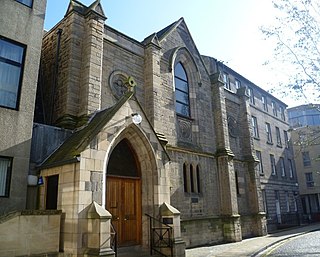
The King Khalid Building is an event space in the Southside, Edinburgh, Scotland, owned and operated by the Royal College of Surgeons of Edinburgh. The building was constructed Roxburgh Free Church in 1847 and converted to its current use in 1982.
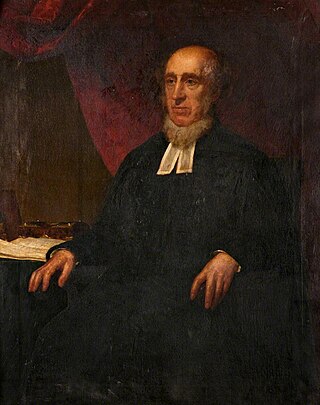
Alexander Hill (1785–1867) was a Scottish minister of the Church of Scotland who served as Moderator of the General Assembly of the Church of Scotland in 1845. He was professor of divinity at the University of Glasgow.
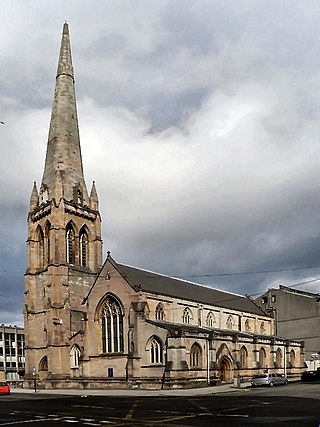
St Andrew's West, formerly but more commonly known as Renfield St Stephen's, is a Church of Scotland parish church in Glasgow. It was designated a Category B listed building in 1970.

Archibald Scott (1837–1909) was a Scottish minister who served as Moderator of the General Assembly of the Church of Scotland in 1896.


















